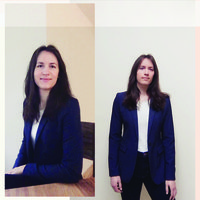There are more than 100,000 known materials in nature, of which approximately 5,000 are layered compounds with each layer bonded via the van der Waals force. When those different layered materials are interfaced with each other, the resulted hybrid systems often manifest fascinating physical properties that do not exist in nature. “Nano Lego” is a technique to separate single or few layers (i.e., down to the two-dimension) from different layered materials and reconstruct artificial super-crystals using these atomically thin building blocks. Like the Lego, those atomic layer crystals can be stacked and/or rotated to build up specific structures in demand, yielding ground-breaking properties that are revolutionizing the condensed matter physics.
Zheng Han, a young professor at the Institute of Opto-Electronics of Shanxi University is one of the experts in “nano Lego”. With the two-dimensional van der Waals nanosheets, he could manage to either master novel nanostructures or miniaturize conventional device into an atomic scale. His team has demonstrated a number of interesting physical phenomena by assembling few-layered materials in a vertical manner.
For example, Zheng and his colleagues realized for the first time a spin field-effect transistor (FET) using a two-dimensional intrinsic magnetic semiconductor. He and collaborators also invented a method to fabricate finFETs with the world-thinnest fin that has a width of only 0.6 nm, approaching the single-atom physical limit.
In addition, Zheng and his colleagues demonstrated an ultra-thin device based on GaTe that shows gate-tuned in-plane anisotropic conductivity along x and y directions, whose anisotropic resistance ratio can be tuned from less than one order to as large as 5000, a world record so far. This giant anisotropic resistance (GAR) effect can be regarded as a ‘traffic control’ for electrons in two-dimension: tuned by a gate voltage, electrons exhibit significantly different conductivity, along different directions. This effect is further utilized to fabricate a prototype of floating gate memory, which exhibits excellent directionally different performances.
In short, Zheng’s research mainly focuses on the emerging physical properties of functional materials in mesoscopic sizes, and further implementing these interesting properties in future applications of nano-asssemblies and nanoelectronics, with such as low-power, multiple functionality, and artificial intelligence.
The future plans, as Zheng Han said, would be the continuous investigations on the field of “nano Lego”. The combination of bottom-up atomic-level manufacturing routes and the current mainstream top-down nano-fabrication technologies will for sure open up tremendous possibilities in nano-sized materials and devices.




